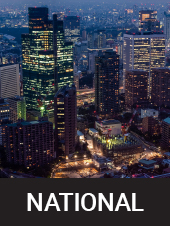Vatican It is expected to soon announce it will return dozens of artifacts to Indigenous communities in Canada as compensation for the Catholic Church's problematic role in helping suppress Indigenous culture in the Americas, officials said Wednesday.
These objects, including an Inuit kayak, are part of the Vatican Museum's ethnographic collection, known as the Anima Mundi Museum. The collection has become a source of controversy at the Vatican amid a broader museum debate over the restitution of cultural property taken from indigenous peoples during colonial periods.
Talks about returning Vatican items accelerated after Pope Francis met in 2022 with Indigenous leaders who came to the Vatican to seek his apology for the church's role in running Canada's disastrous residential schools. During the visit, they were shown some items from the collection, including wampum belts, war clubs and masks, and asked to return them.
Francis later said he favored the return of objects and other objects from the Vatican collection on a case-by-case basis, saying: “In cases where it is possible to return things where a gesture needs to be made, it is better to do so.”
The Canadian Conference of Catholic Bishops said Wednesday it is working with Indigenous groups to return the items to their “original communities.” The statement said the Holy See is expected to announce the return. Vatican and Canadian officials said they expected an announcement in the coming weeks and that the items could arrive on Canadian soil before the end of the year.
The Globe and Mail was the first to report on the restitution talks.

Most of the items in the Vatican collection were sent to Rome by Catholic missionaries to participate in the 1925 exhibition in the Vatican Gardens, which was a highlight of that year's Holy Year.
The Vatican insists the items were “gifts” to Pope Pius XI, who wanted to celebrate the global reach of the church, its missionaries and the lives of the indigenous people they evangelized.

Get the latest national news
To stay on top of news affecting Canada and around the world, sign up for breaking news alerts delivered directly to you as they happen.
But historians, indigenous groups and experts have long questioned whether these items could truly have been offered for free, given the power imbalance that existed at the Catholic missions at the time. During those years, Catholic religious orders helped implement the Canadian government's forced assimilation policy to eradicate Indigenous traditions, which the Truth and Reconciliation Commission of Canada called “cultural genocide.”
Part of these policies included the confiscation of items used in Indigenous spiritual and traditional rituals, such as the 1885 potlatch ban, which prohibited a single Indigenous ceremony. Confiscated items ended up in museums in Canada, the USA and Europe, as well as in private collections.
The return of items from the Vatican collection will follow the church-to-church model that the Holy See used in 2023 when it donated the Parthenon marbles to the Orthodox Christian Church in Greece. The three fragments were described by the Vatican as a “donation” to the Orthodox Church, rather than repatriation from one state to another to the Greek government.
In that case, the Vatican is expected to hand over the items to the Canadian bishops' conference with the express understanding that the ultimate custodians will be Indigenous communities, a Canadian official said Wednesday, speaking on condition of anonymity because negotiations have not yet been completed.

The items, along with any provenance information the Vatican has, will first be transported to the Canadian Museum of History in Gatineau, Quebec. There, experts and indigenous groups will try to determine the items' origins, down to a specific community, and what should be done with them, the official said.
The official declined to say how many items were under negotiation or who made the decision on what would be returned, but said the total numbered “several dozen.” The goal is to return the items this year, the official said, marking the 2025 anniversary, which celebrates hope but is also a time of repentance.
This year's anniversary falls on the centenary of the 1925 Holy Year and the missionary exhibition, which is now so controversial that its 100th anniversary was virtually ignored by the Vatican, which celebrates many anniversaries.
The Assembly of First Nations said some logistical issues, including establishing protocols, need to be resolved before the objects can be returned.
“To Indigenous peoples, these objects are not artifacts. They are living, sacred parts of our cultures and ceremonies and should be treated as the priceless objects that they are,” National Chief Cindy Woodhouse Nepinak told The Canadian Press.
Gloria Bell, an associate professor of art history at McGill University who has done extensive research on the 1925 exhibition, said the objects were acquired during an era of “Catholic imperialism” by a pope who “praised missionaries and their genocidal actions in Indigenous communities as 'heroes of the faith.'
“This planned return marks a significant shift in the recognition of Indigenous sovereignty and perhaps the beginning of healing,” said Bell, who is of Métis descent and wrote about the 1925 exhibition in the book “Eternal Sovereigns: Indigenous Artists, Activists and Travelers Reimagining Rome.”
© 2025 The Canadian Press









